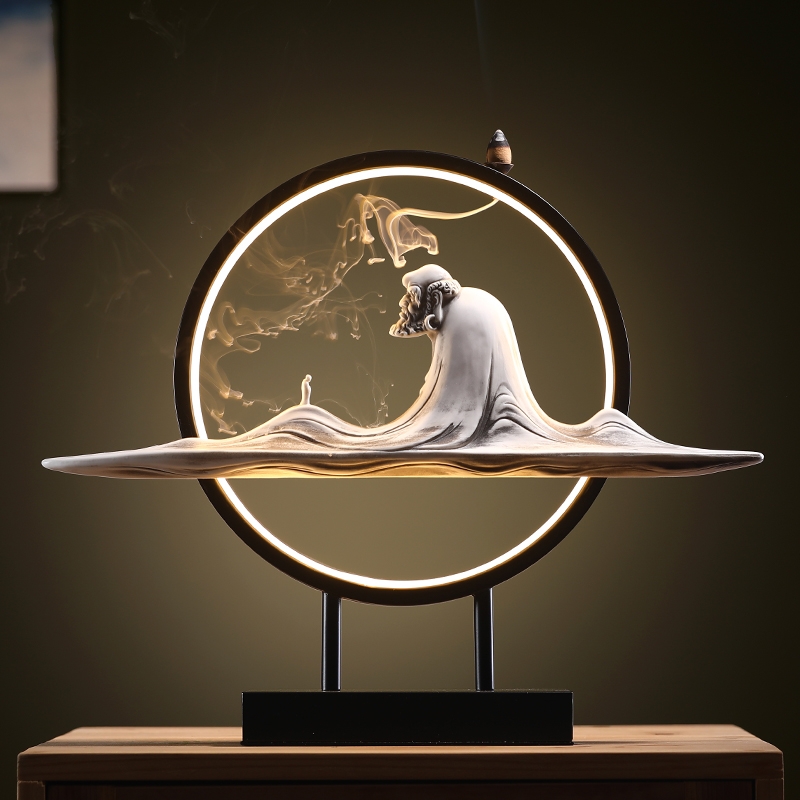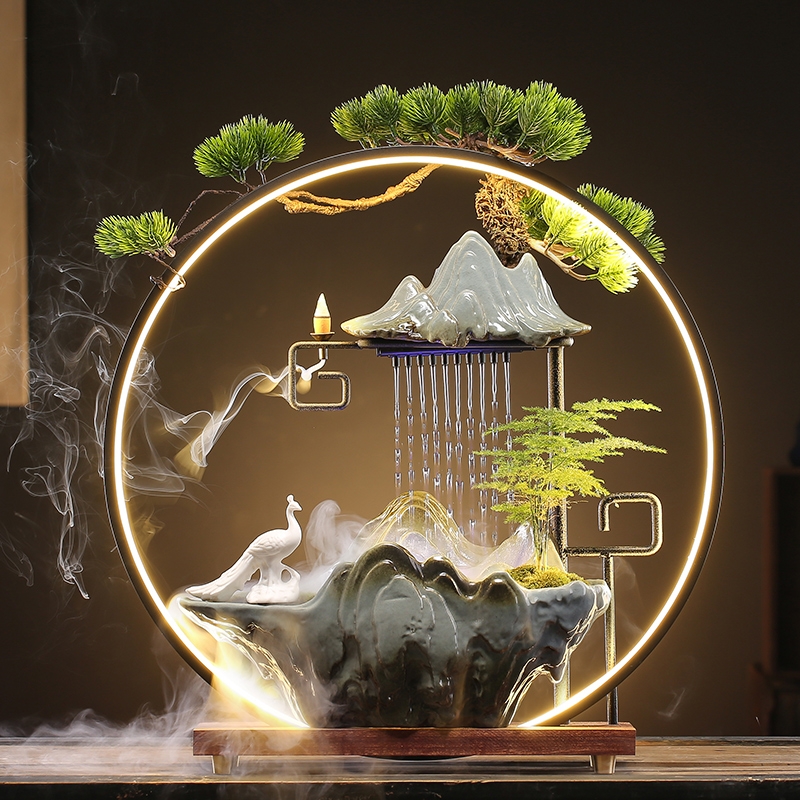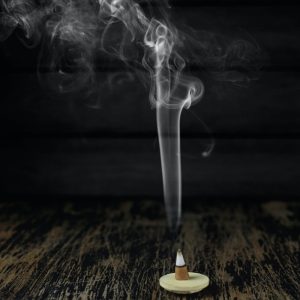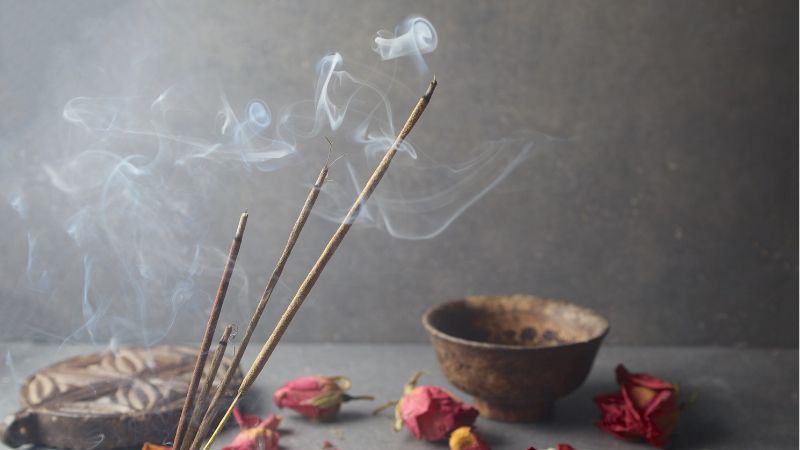
How to Burn Incense Sticks Safely?
Incense sticks, often associated with rituals and spiritual practices, are also popularly used around the world for creating an inviting, calm atmosphere at home or

Incense fountains have become increasingly popular home decor items in recent years. The soothing sound of trickling water combined with the aromatic scent of incense fills a space with tranquility.
If you’re looking to add one of these fountains to your home, there are a few key factors to consider to ensure you choose the perfect model for your needs.
In this blog post, we’ll explore the different types of incense fountains, materials, size and placement considerations, and additional features to look for when selecting the ideal fountain.

There are a few main styles of incense fountains to choose from:
Tabletop fountains are compact incense fountain models designed to sit on a desk, table, or shelf. These small fountains range in size from 5-12 inches tall and utilize battery-operated pumps so they can be placed anywhere without needing an electrical outlet nearby.
Tabletop fountains often use plastic or glass for the water basin and include minimal ornamentation. They’re an easy way to enjoy the benefits of an incense fountain in even the smallest living space.
Larger freestanding incense fountains are designed to sit on the floor and range in size from 2-4 feet tall. These fountains often use electric pumps and have larger water reservoirs allowing the fountain to run for longer between refills.
Floor fountains are made from materials like ceramic, stone, or hammered metal and have more detailed ornamental elements like crafted Asian-inspired roofing or bamboo spouts. Their larger size produces a more voluminous trickling sound to promote deeper relaxation.
Wall-mounted incense fountain models affix directly onto the wall rather than sitting on a surface. They come in a range of sizes from small 5-inch diameter fountains up to 3-foot long waterfall wall fountains.
Wall-mounted fountains often have contemporary sleek designs or imitation bamboo or natural rock wall coverings. They can add a serene focal point to an empty wall without taking up valuable floor space.
Incense fountains can be constructed from various materials that range drastically in look, feel, and price point. Consider which material best fits your space’s existing aesthetics and budget.
Ceramic and porcelain fountains have a classic ornate style. Glazed ceramic is long-lasting, easy to clean, and more affordable than other options. Porcelain is translucent and delicate with a higher price tag.
Slate, marble, and other stone fountain materials add natural texture. They’re durable and heavier compared to other materials. Opt for lightweight faux stone resin if weight is a concern.
Glass fountains have a glittering, contemporary appearance. Tempered glass is very durable and easy to keep clean. Glass also amplifies the pleasant trickling sound.
Metals like copper, iron, and stainless steel provide unique finishes like hammered, rusted, or galvanized. Metal is durable but prone to possible pits and corrosion over time.
Wood incense fountains feel organic and warm. Bamboo spouts are common. Make sure real bamboo is properly treated to resist mold. Engineered wood composites are lower maintenance.
Resin fountains look similar to real materials like stone, metal, or ceramic but are far lighter and cheaper. Drawbacks are a lack of texture and lower durability.

Carefully measure the space where you want to place your incense fountain to determine the ideal size. Make sure you account for proximity to seating areas or paths through the room when deciding on dimensions.
When selecting a size, factor in:
Small fountains under 20 inches work well on desks, tables, shelves, and in alcoves. Go for a dainty tabletop model or mini wall fountain for smaller spots.
Mid-sized fountains around 2-3 feet tall and wide are ideal for placement in corners of living rooms, bedrooms, or entryways.
Large fountains over 3 feet tall make bold statements in open living areas, entryways, and halls. Very large 4-6 foot wide fountain models can serve as room dividing screens.
Consider your goals for the fountain visual impact:
Scale your fountain to balance properly with other furnishings so it does not look uncomfortably undersized or oversized.
Decide on the fountain’s placement in your space before buying so you select the right size. Also consider the fountain’s visibility, access to electrical outlets, plumbing lines for drainage, and proximity to seating areas.
Place next to a sofa or chairs so the soothing trickling sound provides a relaxing backdrop when lounging. Avoid highly trafficked pathways to prevent getting bumped into.
Considerations for living room fountain placement:
Situated near the bed, the fountain’s ambiance lulls you to sleep. Place on a sturdy nightstand or dresser, not directly on the bed.
Bedroom fountain placement tips:
Welcome guests with a hall table or console fountain near your front door. Add a larger floor fountain in an open foyer if space allows.
Entryway fountain placement:
A desktop fountain stimulates focus during work. Larger models help counter workplace stress when placed in office common areas.
Home office fountain placement ideas:
The high humidity works well for small wall-mounted or pedestal sink fountains. Avoid placing it directly in the shower.
Bathroom fountain placement tips:

Look for these special features when selecting your perfect incense fountain:
Finding the right incense fountain to complement your living space doesn’t have to be a challenge. By carefully considering the fountain design, size, placement, and features, you can select a model that blends form and function to create a relaxing ambiance.
Use this guide to narrow down the choices and soon you’ll be enjoying your own perfect indoor water feature. The soothing sights and sounds are sure to make your home a sanctuary.


Incense sticks, often associated with rituals and spiritual practices, are also popularly used around the world for creating an inviting, calm atmosphere at home or

An incense fountain can be a beautiful addition to any home or office. The soothing sound of trickling water combined with the aromatic scent of

Meditation is an invaluable practice for reducing stress and attaining inner peace. While meditation’s benefits are profound on their own, tools like backflow incense burners

Incense has been an integral part of spiritual practice in The Chan Sect Buddhism for centuries. The burning of incense represents the ephemeral nature of

Incense sticks, often associated with rituals and spiritual practices, are also popularly used around the world for creating an inviting, calm atmosphere at home or

An incense fountain can be a beautiful addition to any home or office. The soothing sound of trickling water combined with the aromatic scent of

Meditation is an invaluable practice for reducing stress and attaining inner peace. While meditation’s benefits are profound on their own, tools like backflow incense burners

Incense has been an integral part of spiritual practice in The Chan Sect Buddhism for centuries. The burning of incense represents the ephemeral nature of
Copyright © 2024 burnwaterfallincense. All Rights Reserved.